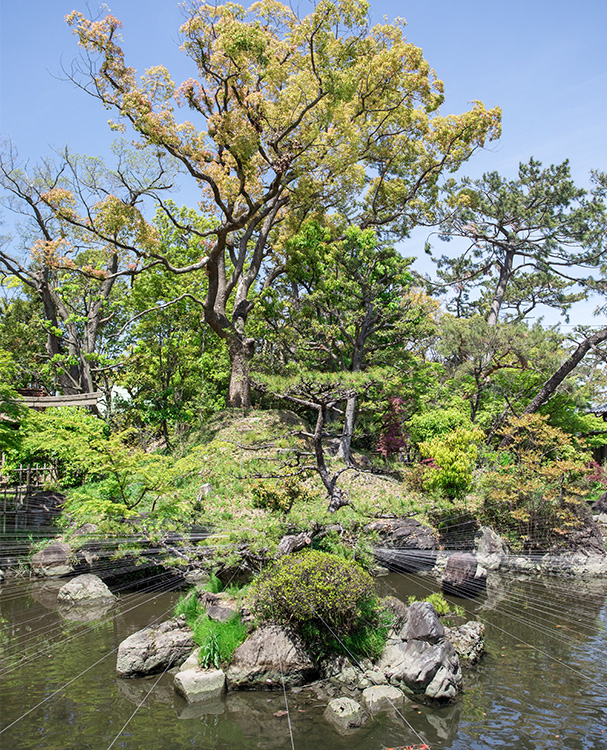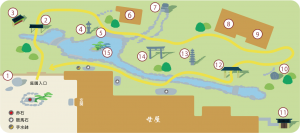A Majestic Garden Steeped in History
Located on the site of the former new tea house within the grounds of what was once Kishiwada Castle, our expansive garden spans 2,400 tsubo (approximately 7,950 square meters) and offers a stunning view that changes with each of the four seasons. In addition to the main house, the garden features three exquisitely designed tea rooms, each showcasing the elegance of traditional Japanese architecture. Here, visitors can experience a thirteen-tier stone pagoda and a water basin that reflects the beauty of the autumn moon, evoking the grandeur of a bygone era. This remarkable garden is open to the public, inviting guests to wander freely and enjoy its beauty at their leisure.
- ① 石柱
- ② 為善門
- ③ 待ち席
- ④ 雪見灯篭
- ⑤ 船着き場
- ⑥ 山亭
- ⑦ 滝の大岩
- ⑧ 利庵・残月席
- ⑨ 利庵・八窓席
- ⑩ 野仏
- ⑪ 南木門
- ⑫ 船津橋御門
- ⑬ 十三石の塔
- ⑭ 屋敷神
- ⑮ 蓬莱島
This inscription firmly instructs that alcohol must not be brought into the sacred space beyond the gate, which marks the boundary between the worldly and the spiritual.
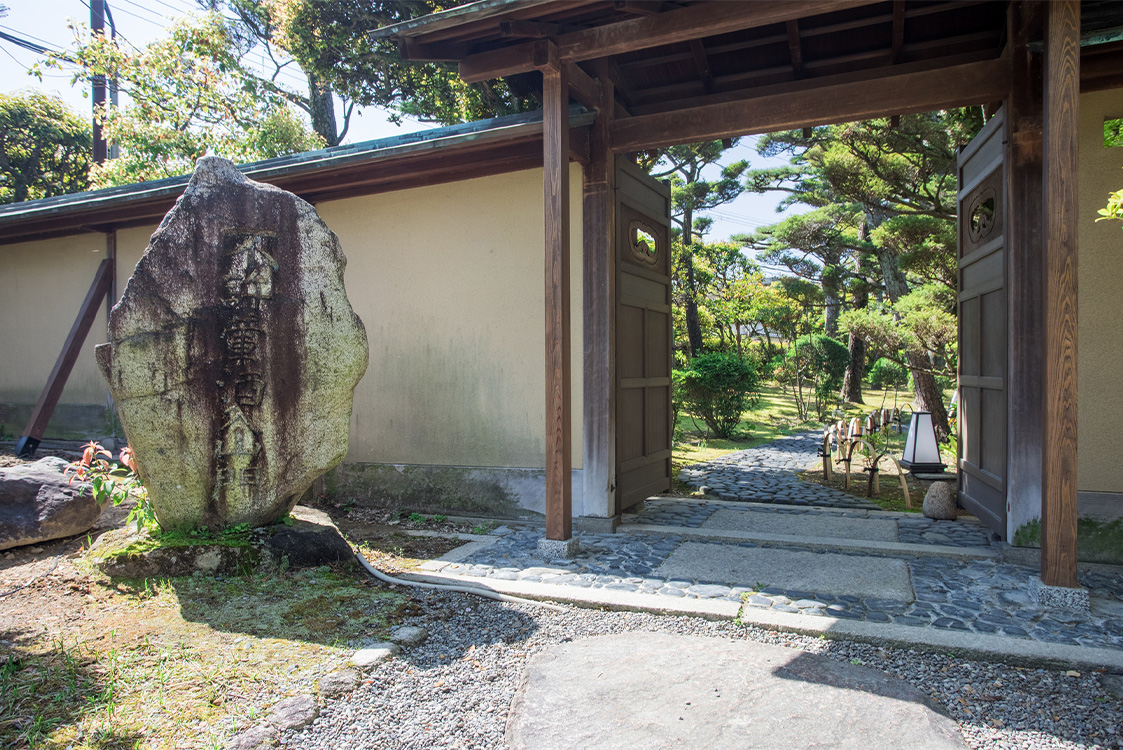
石柱
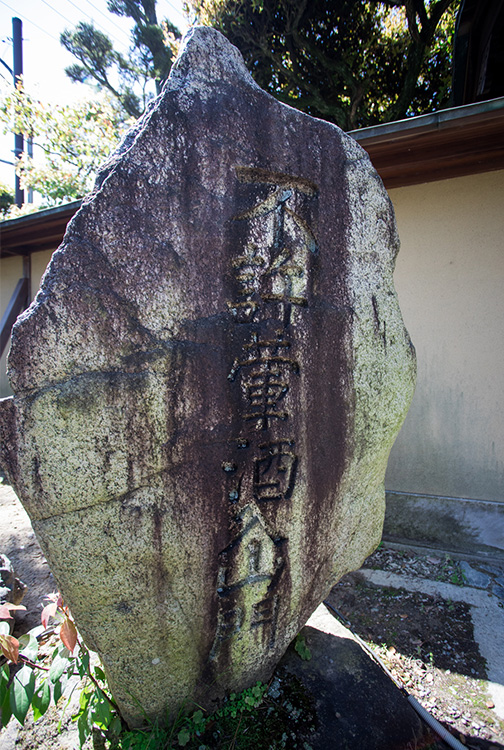
為善門
A gate that invites you to appreciate the intriguing contrast between its heavy tiled roof and slender wooden pillars.
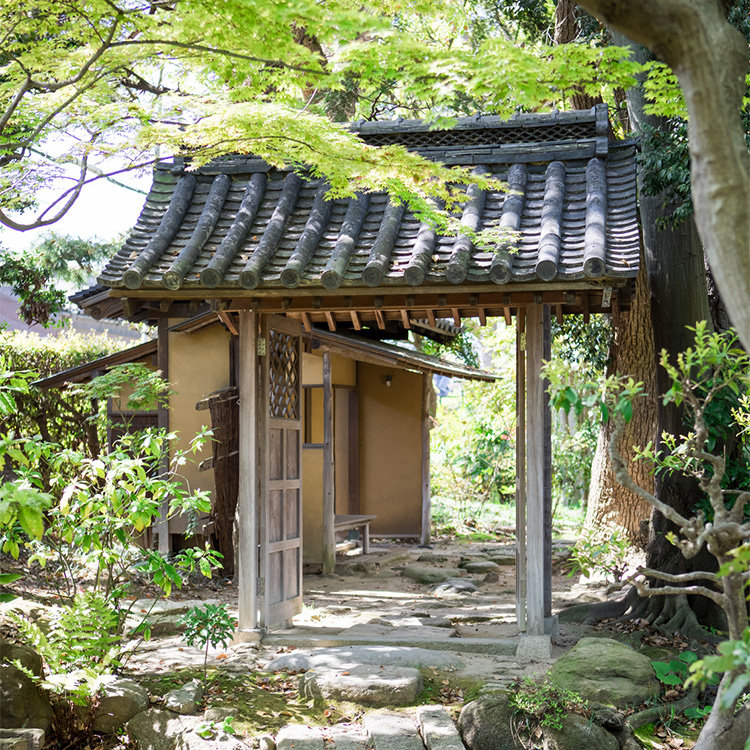
待ち席
This is the seating area while preparations for the tea are made.
The seat on the far left is reserved for the esteemed guest.
The seat on the far left is reserved for the esteemed guest.
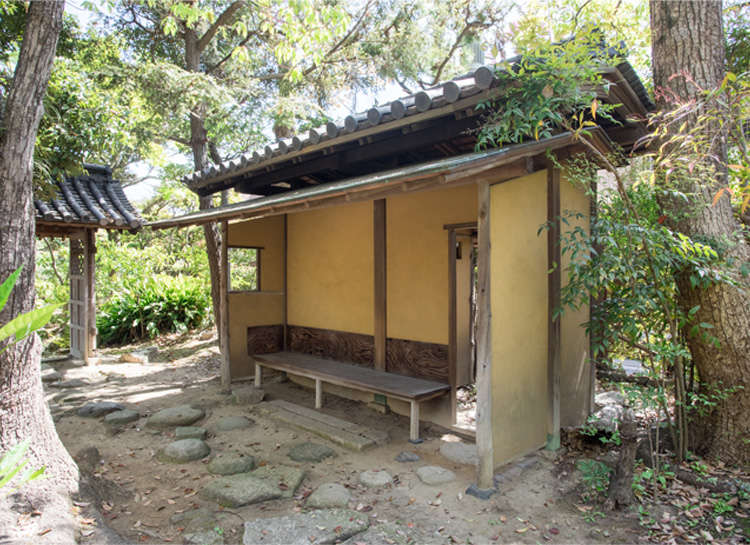
待ち席
From this vantage point, if you look between the gate and the trees in the upper right, you will catch a glimpse of Kishiwada Castle.
雪見灯篭
These low lanterns are for illuminating the path during snowfall.
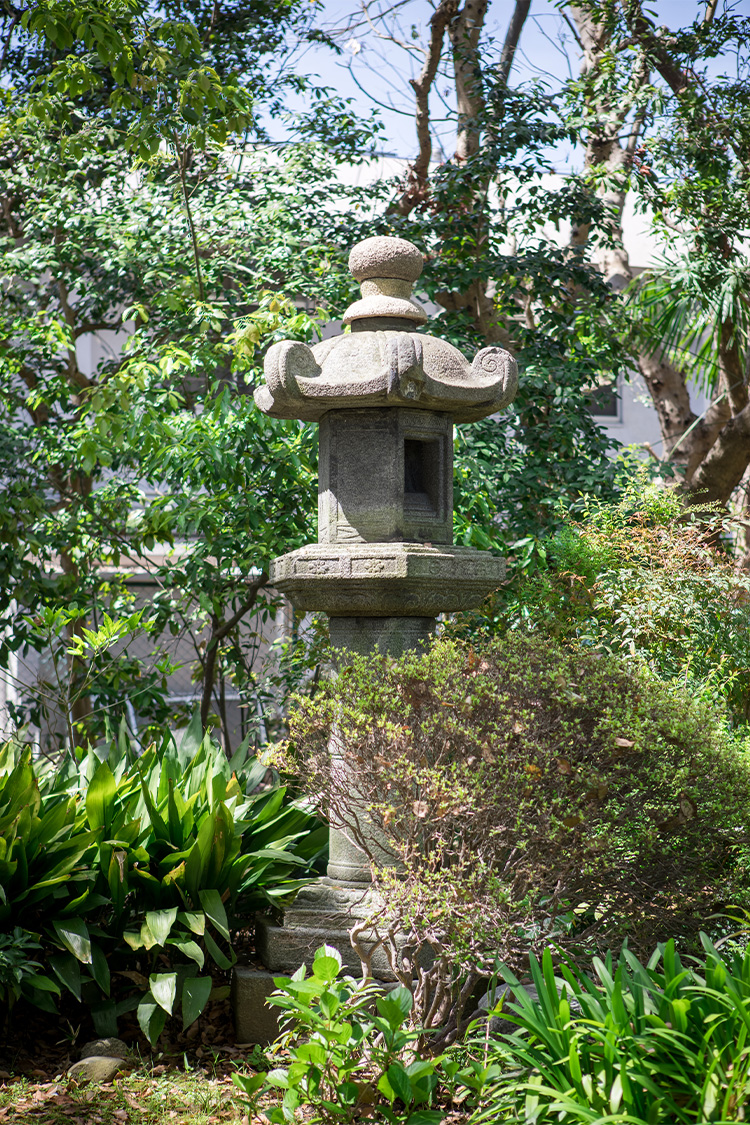
船着き場
It is said that guests once indulged in the extraordinary luxury of crossing the pond by boat. Events such as moon-viewing parties were also held here.
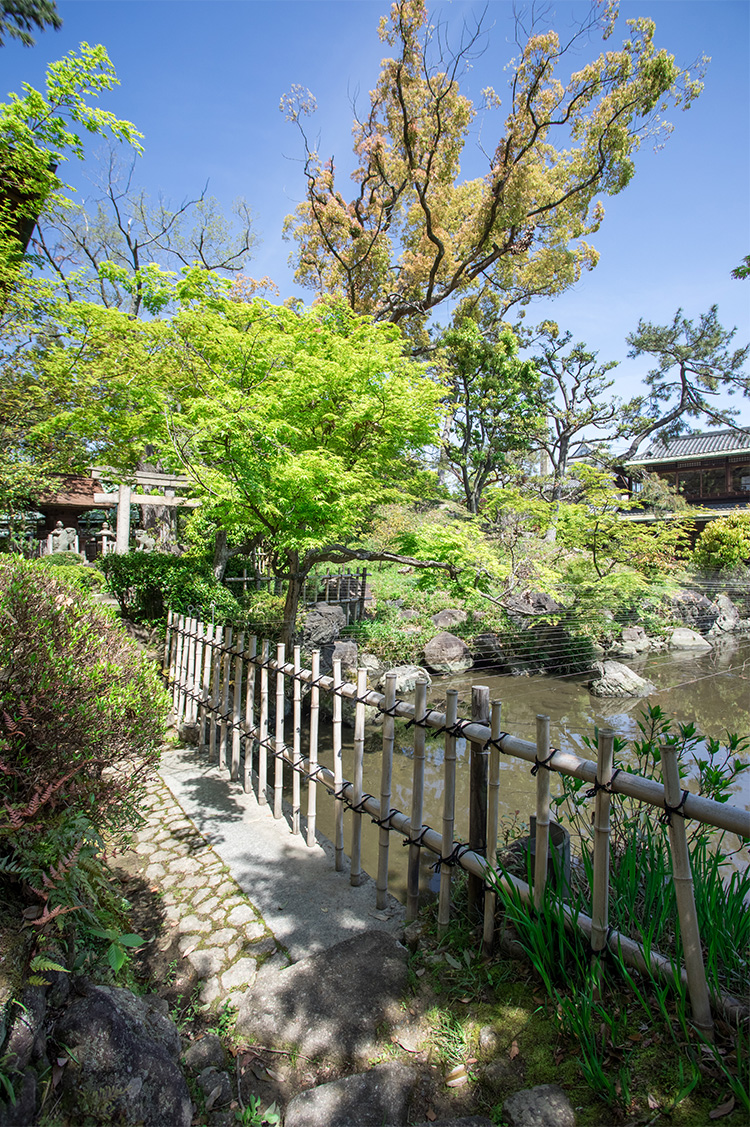
山亭
This bright tea room, with two glass walls, allows light to penetrate deep into the room. The design is by Mr. Sozen Kitsu, with construction by local carpenter Kihei Ogawa, whose workshop is named "Oki." It follows the same architectural style as Kiyomizu-dera in Kyoto, known as "kakezukuri" (cliffside construction). The remarkable skill of the carpenter is evident in the natural way the wood seems to grow from the stone. The wood used in this structure is Muro, a type of evergreen.
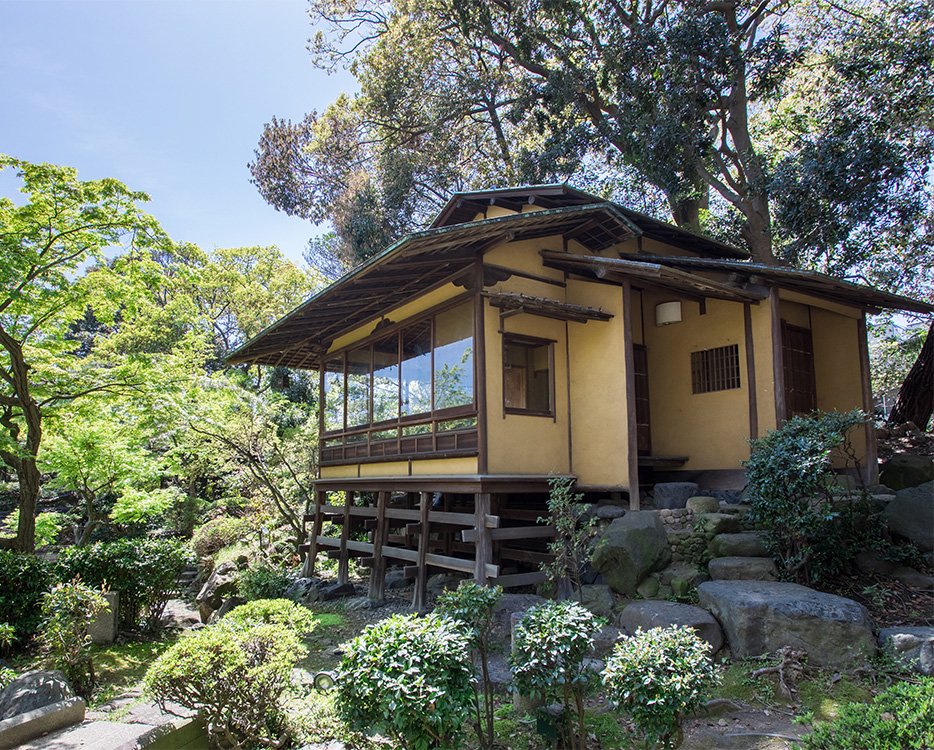
滝の大岩
The name "Santei" reflects the natural flow of water, where streams from mountain waterfalls converge to form a river, eventually making their way to the sea.
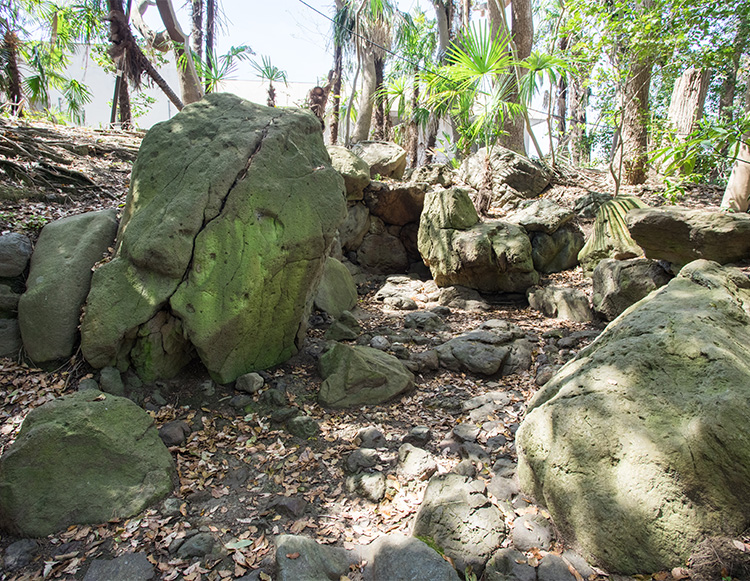
利庵・残月席
This tea room was designed for esteemed guests and features a special entrance, allowing them to enter without bowing. It is a faithful reproduction of the Zangetsu-seki tea room of the Omotesenke school.
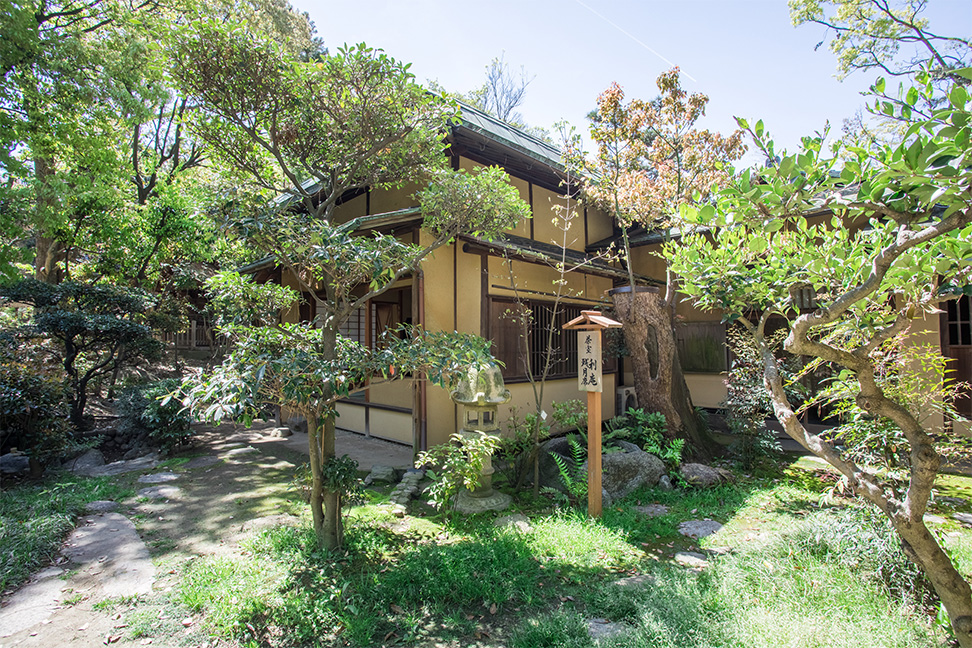
利庵・八窓席
This tea room was designed for esteemed guests and features a special entrance, allowing them to enter without bowing. It is a faithful reproduction of the Zangetsu-seki tea room of the Omotesenke school.
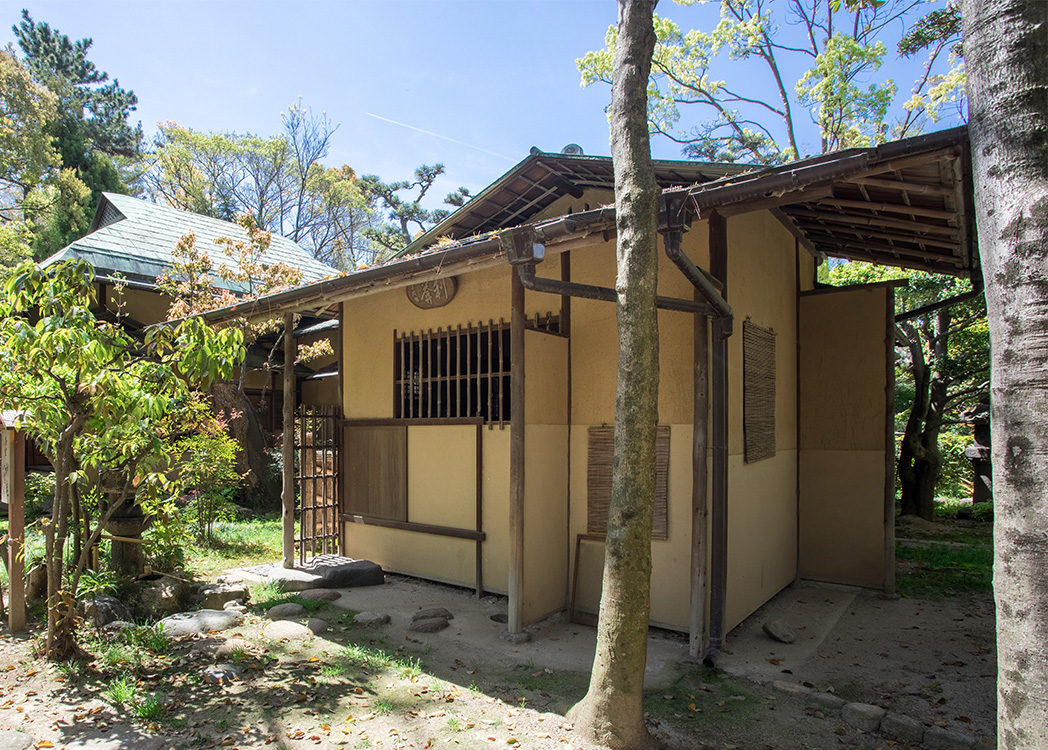
野仏
A stone Buddha statue resides here, evoking the tranquil ambiance of a secluded mountain village.

南木門
The gate is said to have been originally part of the Chūsei-in sub-temple of Tōdai-ji in Nara before being relocated here. It is the oldest structure within Gofūsō.

船津橋御門
A gate built using the bridge pillars of Funatsu Bridge.
With its solid pillars and a light wooden roof, it stands in contrast to the "Izenmon" Gate.
With its solid pillars and a light wooden roof, it stands in contrast to the "Izenmon" Gate.
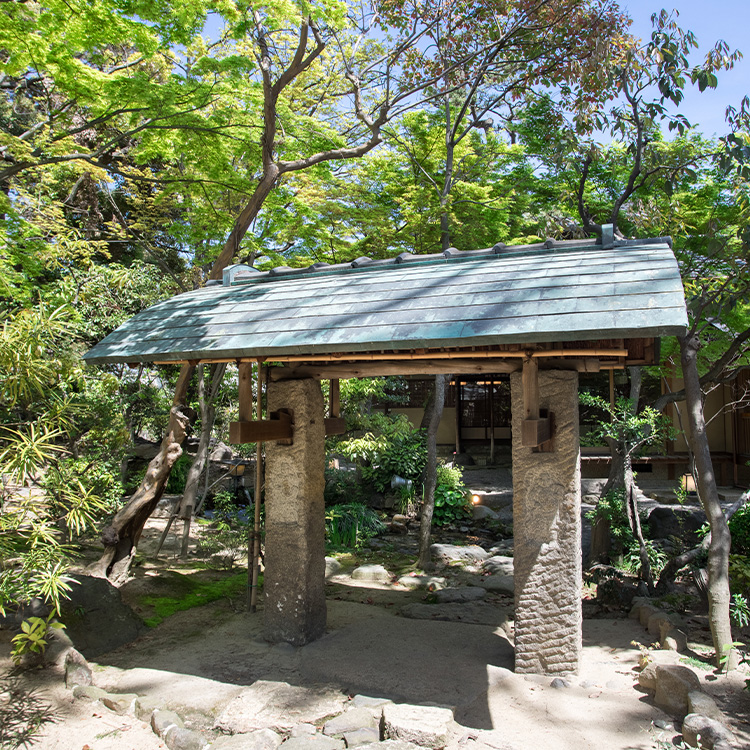
十三石の塔
This pagoda, built in the first year of the Bun'ei era (1264), is over 720 years old. Originally brought to Japan by Oda Nobunaga to Azuchi Castle, it later moved to Osaka Castle and various other locations before being acquired by Terada Toshikichi. The thirteen-stone pagoda serves as a symbolic marker for memorial rites, from the first seven days to the thirty-third year.
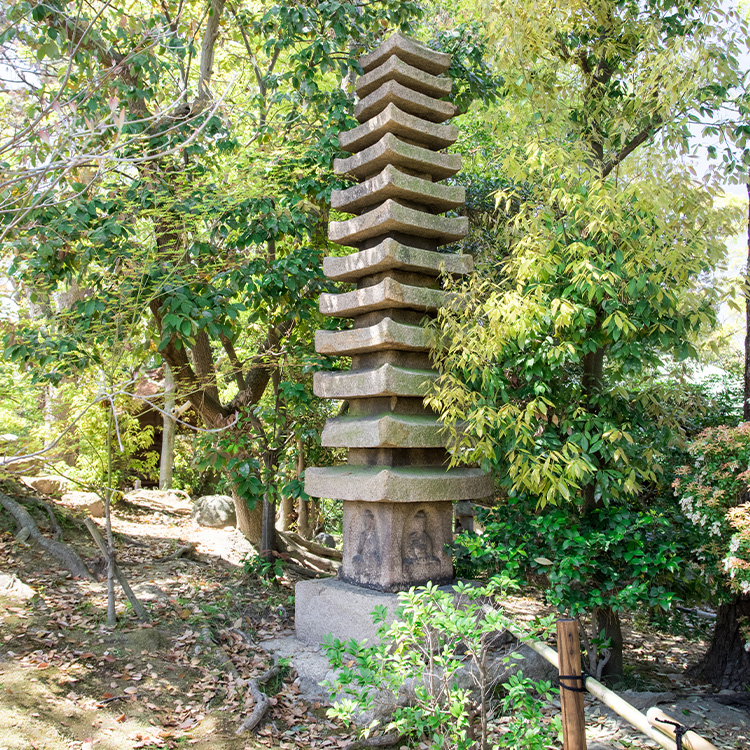
屋敷神
Like Kishiki Shrine, this shrine enshrines Hachiman, the god of war, to protect the estate. The shrine is modeled after a futon drum from Izumisano, with a roof added. The tassels on the cushions atop the roof symbolize rice stalks, while the intricate carvings of fish on the base represent a prayer for a bountiful harvest.
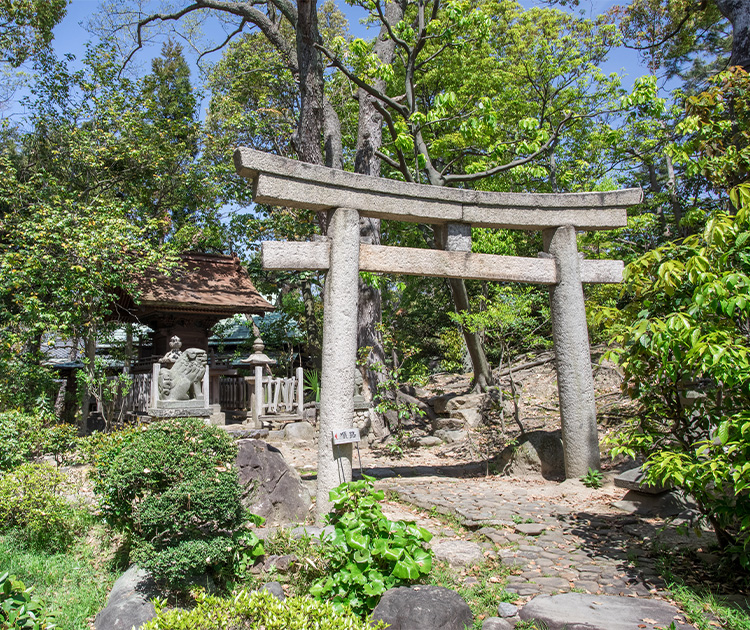
蓬莱島
At the center of the Gourd Pond lies an island, said to be home to a hermit. The rock formation, shaped like a treasure ship, symbolizes the act of carrying the elixir of immortality.
